Looking for the best vlogging camera you can buy? You've come to the right place. We've thoroughly tested and ranked the best options for everyday videographers. If you're looking for the best YouTube camera, we have a separate guide for that – and while there's some overlap with this list, here we've focused on the cameras that are best-suited to those who like to travel and roam for their vlogging creations.
There are a few factors consider when searching for the best vlogging camera. You'll want something that's small enough to carry around with you all day, while also offering the power and features needed to capture high-quality footage and audio. Think external mic inputs, articulating screens and great connectivity.
Whatever your budget or requirements, our vlogging cameras guide will have the ideal option for you. From 4K-shooting compacts to powerful mirrorless cameras, we've thoroughly grilled all of the models below to make sure they tick all of the vlogging boxes.
The main thing to bear in mind when picking a vlogging camera is your intended shooting style. If you like to create quick, on-the-go recordings, something pocketable will be perfect, while a mirrorless or DSLR camera will be more suitable if you want greater creative choice or higher quality production. Alternatively, try something rugged if action brings you views, or a model with image stabilization if you like to walk as you talk.
Our top overall pick right now is the Olympus OM-D E-M5 Mark III. It’s lightweight, feature-packed and offers pretty much every feature most vloggers could want, including class-leading image stabilization.
But that doesn’t mean it’s the perfect camera for everyone. The Sony ZV-1, for example, is our favorite compact vlogging option, and could be the better choice if you want something you can take everywhere.
We’ve included the best of the latest models, as well as a few older ones that offer excellent value, to help you find exactly the right camera for you.

Best vlogging cameras 2020 at a glance:
- Olympus E-M5 Mark III
- Sony ZV-1
- Canon PowerShot G7 X Mark III
- Sony A6400
- Canon EOS M50
- Canon EOS M6 Mark II
- Sony A6100
- GoPro Hero 8 Black
- Panasonic Lumix G90/G95
- Canon EOS 90D
- DJI Osmo Pocket

Best vlogging cameras in 2020:
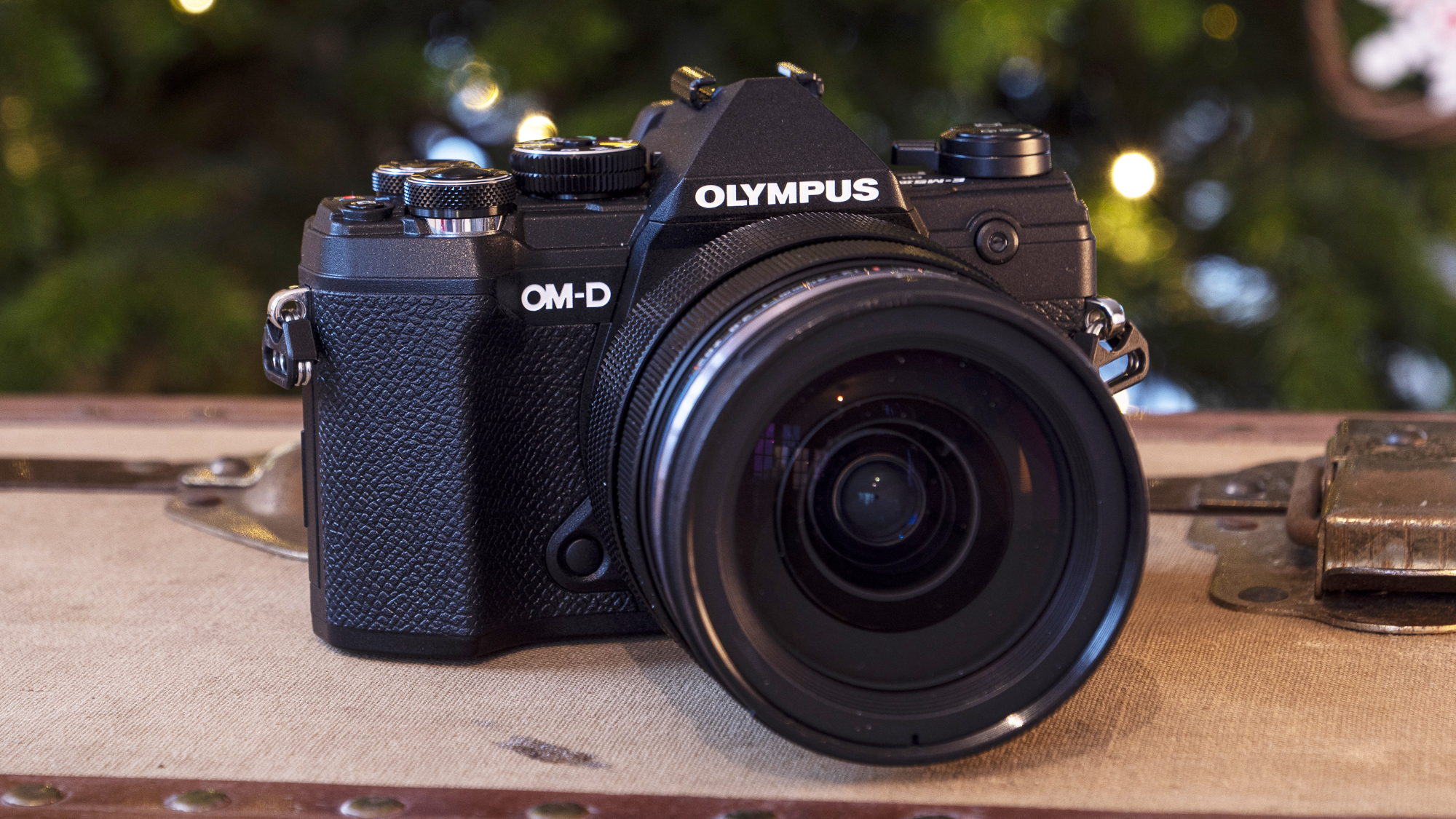
1. Olympus OM-D E-M5 Mark III
Lightweight and feature-packed, this is the ultimate vlogging tool
Type: Mirrorless | Sensor size: Four Thirds: | Resolution: 20.4MP | Effective focal length: N/A | Viewfinder: EVF, 2.36 million dots | Monitor: 3.0-inch vari-angle touchscreen, 1.04 million dots | Connectivity: Wi-Fi, Bluetooth | Max movie resolution: 4K 30p | Size, weight: 125.3 x 85.2 x 49.7mm, 414g
Don’t be fooled by the retro shell: the Olympus OM-D E-M5 Mark III is a top-spec vlogging camera, offering the ultimate combo of solid image quality, lightweight build and a comprehensive feature set. The hand-grip could be bigger, but the polycarbonate construction shaves 50g off the weight of its metal-bodied predecessor, making it a camera you can comfortably hold all day. The 20.4MP Four Thirds sensor – shared with the pro-grade E-M1 Mark II – delivers reliable continuous tracking thanks to on-chip phase detection autofocus, while handheld footage is usually super smooth, courtesy of class-leading image stabilization. The option to shoot Cinema 4K at 24fps and a 237Mbps bit-rate is seriously impressive, while regular 4K footage at 30fps is routinely excellent, with lovely color rendition and good detail. Full HD at up to 120fps completes a comprehensive video offering. The vari-angle touchscreen makes framing a cinch, too, while the healthy Olympus lens catalogue opens up plenty of creative avenues. There’s no headphone jack, which will irk some videographers, but that sought-after external microphone port is there. Sure, it’s a bit expensive, but as a complete vlogging package it’s tough to beat.
- Read our in-depth Olympus OM-D E-M5 Mark III review

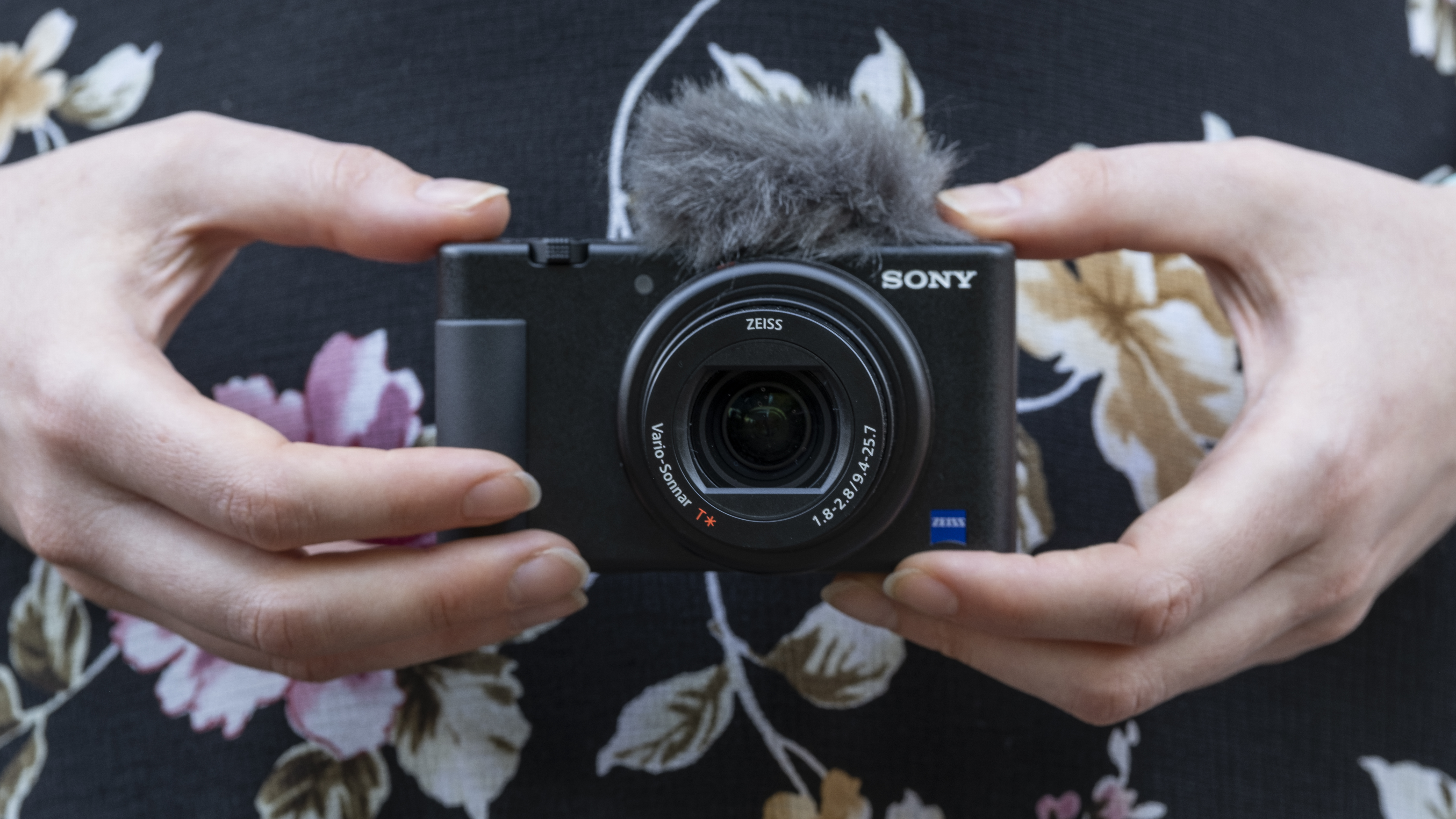
2. Sony ZV-1
The best compact vlogging camera around
Type: Compact | Sensor size: 1-inch | Resolution: 20.1MP | Effective focal length: 24-70mm | Viewfinder: None | Monitor: 3.0-inch vari-angle touchscreen, 0.921-million dots | Connectivity: Wi-Fi, Bluetooth | Max movie resolution: 4K 30p | Size, weight: 105.5 x 60.0 x 43.5 mm, 294g
For a long time, the Canon G7 X Mark III was our favorite compact vlogging camera, but it's just been knocked off its perch by the excellent Sony ZV-1. By combining all of the best bits of Sony's RX100 series (for example, the RX100 VII's microphone port and autofocus, plus the RX100 V's bright 24-70mm f/1.8-2.8 lens) the ZV-1 really nails what most people want from a small vlogging camera. Sony's latest Real-time tracking and Eye AF are the best around and the ZV-1 also has a huge amount of depth for a compact camera, including a built-in ND filter and profiles like S-Log2 for those who want to embrace color grading. We still think the Olympus OM-D E-M5 Mark III's stabilization and image quality are better still, but you won't find a finer pocket vlogging camera than the Sony ZV-1.
- Read our in-depth Sony ZV-1 review

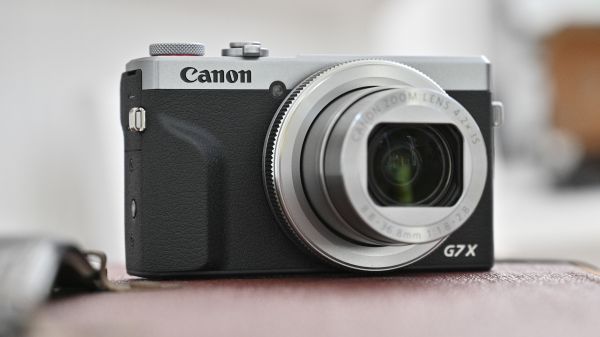
3. Canon PowerShot G7 X Mark III
Still a fine pocket vlogging camera, despite the arrival of the Sony ZV-1
Type: Compact | Sensor size: 1.0-type | Resolution: 20.1MP | Effective focal length: 24-100mm | Viewfinder: None | Monitor: 3.0-inch tilt-angle touchscreen | Connectivity: Wi-Fi, NFC | Max movie resolution: 4K | Size, weight: 105.5 x 60.9 x 41.4mm, 304g
Long popular with vloggers, Canon’s G7X range has kicked it up a notch with the Mark III. There’s a very capable 20.1 megapixel one-inch sensor, but now it’s also equipped with uncropped 4K video recording, along with something that's been requested many times – a microphone socket.
This means you can elevate the sound above and beyond the internal mic’s offering, if you want to. Even better, the G7X III can stream directly to YouTube – which is, right now, an advantage over the Sony ZV-1 – so you can live vlog whatever’s happening around you, without having to downgrade to using your smartphone. USB charging is another great feature which means you can give it power bursts on the go – particularly prudent if you’ve been shooting a lot of 4K video.
The G7X Mark III's contrast detection-only AF and more limited tilting screen mean it's been nudged down this list by the Sony ZV-1, but it's also more affordable and is still well worth considering if you need a pocket vlogging rocket.
- Read our in-depth Canon PowerShot G7 X Mark III review

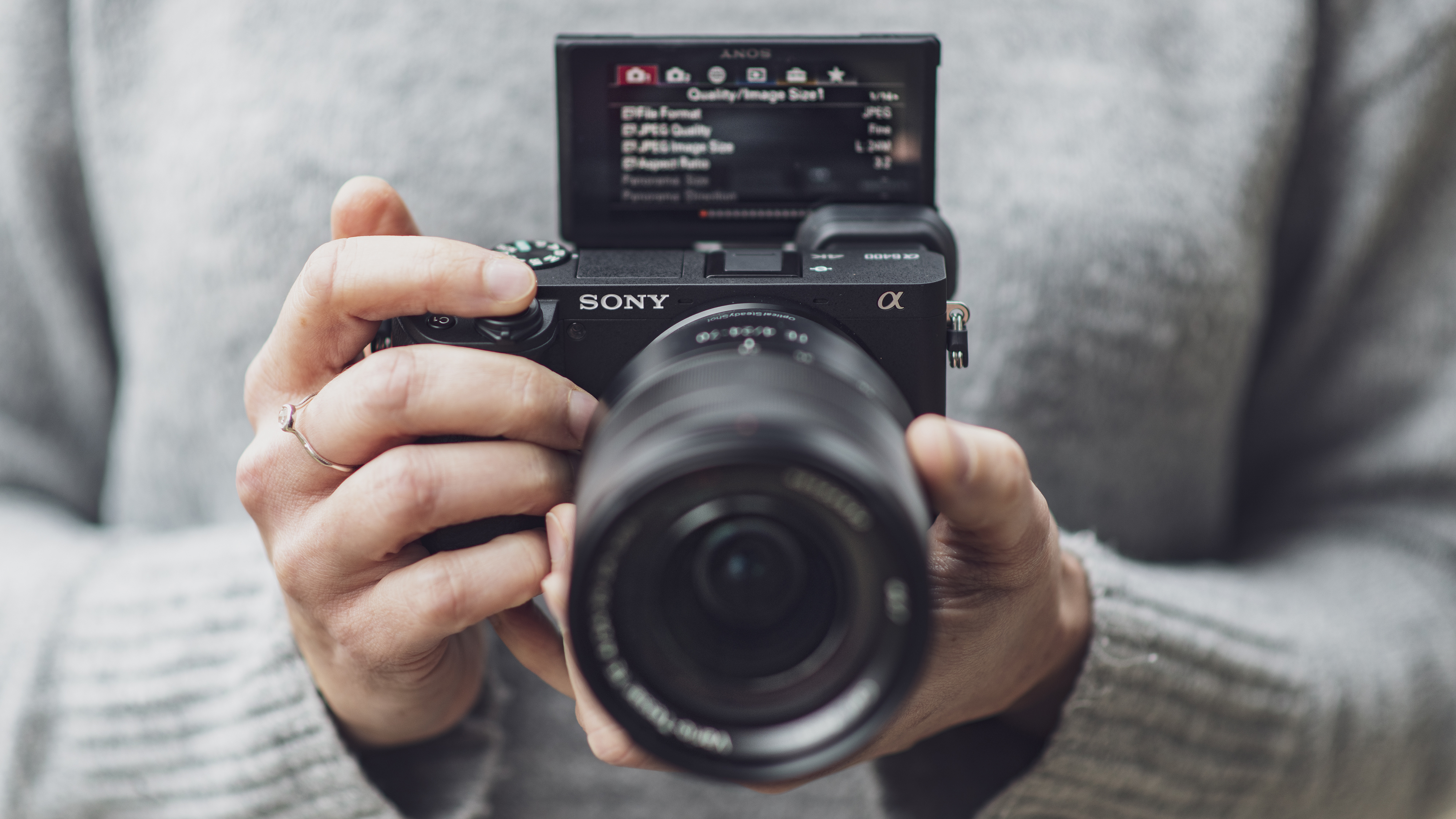
4. Sony A6400
This feature-packed snapper is built for vloggers
Type: Mirrorless | Sensor size: APS-C CMOS | Resolution: 24.2MP | Effective focal length: N/A | Viewfinder: EVF, 2.36 million dots | Monitor: 3.0-inch tilt-angle touchscreen, 921,000 dots | Connectivity: Wi-Fi, NFC and Bluetooth | Max movie resolution: 4K | Size, weight: 120 x 67 x 60mm, 403g
Sony’s Alpha cameras have long been popular with vloggers, and the A6400 is no exception. 4K is a given, while support for S-log3 and S-log2 should please post-producers. There’s 4K HDR (HLG) for instant playback and Sony’s Imaging Edge Mobile app makes it possible to transfer video to your smartphone. Front-on framing is straightforward, too, thanks to a flip-up 16:9 touchscreen, while the A6400’s advanced autofocus system serves up superb subject tracking. Port options, though, will put some vloggers off: as with the 6300 before it, there’s a microphone input but no headphone socket on the A6400. Many won’t monitor audio as they record, but it’s worth noting if interviews are your thing. There’s no in-body image stabilization either, and many of Sony’s prime lenses don’t feature it – not a problem if you use a tripod or go for that handheld aesthetic.
- Read our in-depth Sony A6400 review

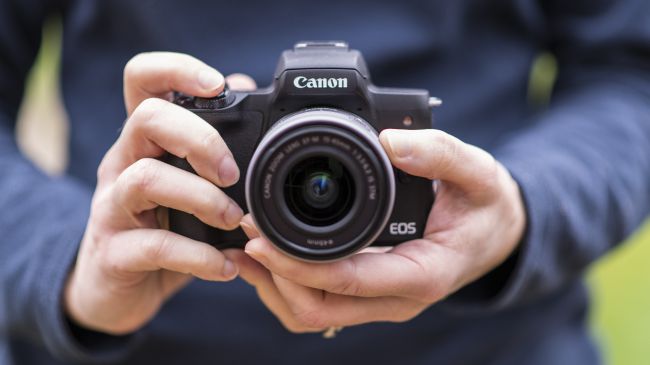
5. Canon EOS M50
A great option if you don't mind shooting in 1080p
Type: Mirrorless | Sensor size: APS-C CMOS | Resolution: 24.1MP | Effective focal length: N/A | Viewfinder: EVF, 2.36 million dots | Monitor: 3.0-inch vari-angle touchscreen, 1.04 million dots | Connectivity: Wi-Fi, NFC and Bluetooth | Max movie resolution: 4K | Size, weight: 116 x 88 x 59mm, 390g
If you need to shoot in 4K, then the Canon EOS M50 is best avoided due to mandatory 1.6x crop when shooting in this mode. But if you're making the switch from a smartphone and don't mind shooting in 1080p, then it's an excellent choice at current prices. Equipped with a 24.1MP APS-C CMOS sensor, the M50 was Canon’s first camera to ship with the DIGIC 8 processor – and it was the first mirrorless camera that could shoot 4K footage at up to 24fps. The downside is that crop in 4K, which means you’ll have a narrow field of view even when you’re filming at a wide focal length – tricky if you’re recording with an outstretched arm. You don’t get any of the specialized video profiles found on more expensive models, either, but the point of the M50 is that it’s compact and accessible. With a microphone input, vari-angle touchscreen and range of connectivity options in the mix, the M50 is still a stellar starter cam for budding vloggers.
- Read our in-depth Canon EOS M50 review

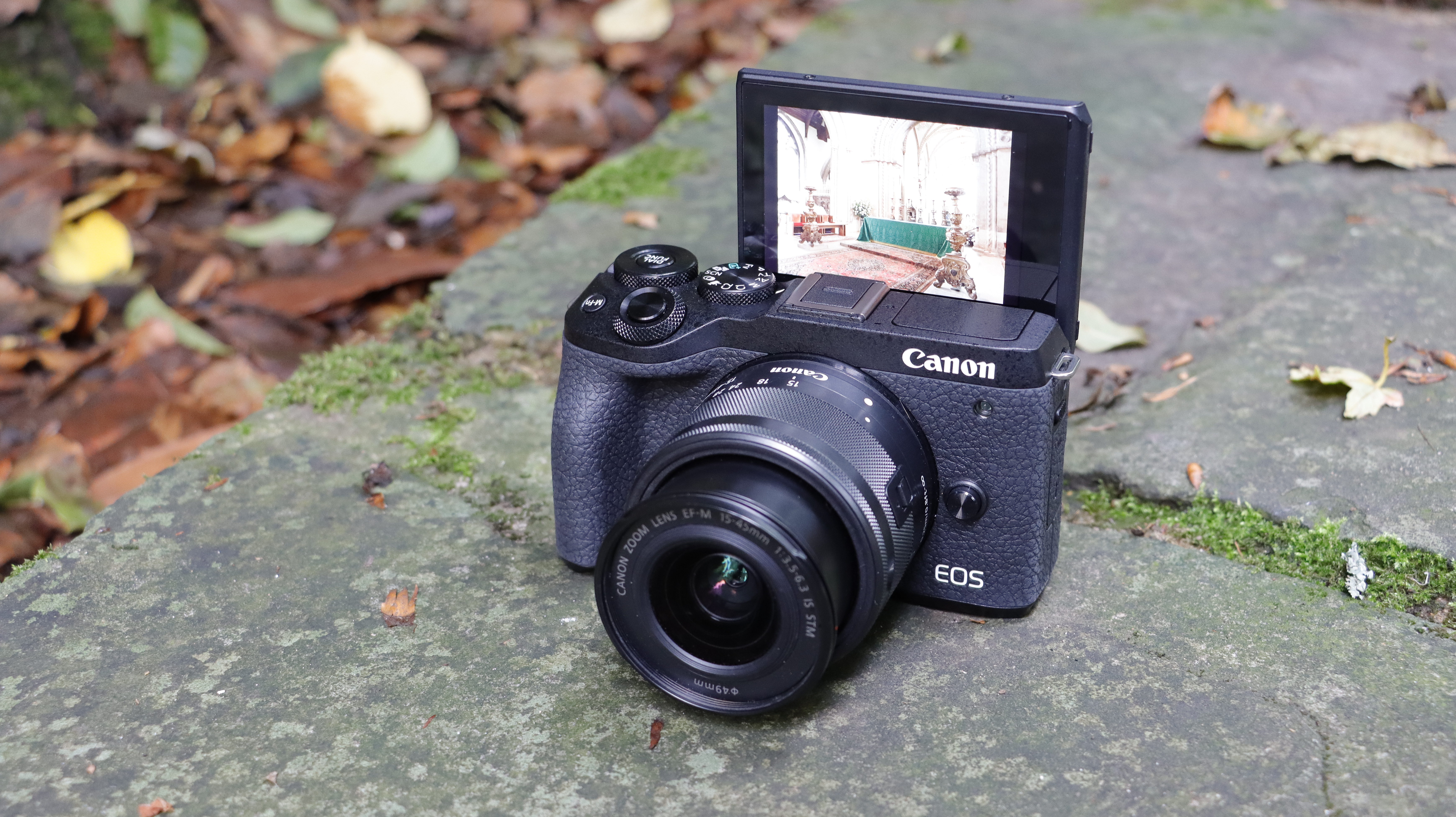
6. Canon EOS M6 Mark II
A travel-friendly CSC is great for video for many different reasons
Type: Mirrorless | Sensor size: APS-C | Resolution: 32.5MP | Effective focal length: N/A | Viewfinder: Not inbuilt | Monitor: 3.0-inch vari-angle touchscreen | Connectivity: Wi-Fi, NFC, Bluetooth | Max movie resolution: 4K 30p | Size, weight: 119.6 x 70 x 49.2mm, 408g
Canon really is the king of vlogging cameras, with several making our list thanks to a fantastic range of features and options. The Canon EOS Mark II is the latest iteration of its M series of compact system cameras, and is small and light enough to be a great travel companion.
However, in its miniature body, it’s housing the same high-resolution 32.5 megapixel sensor as the 90D DSLR (see below). With Dual Pixel CMOS AF and uncropped 4K video recording, it’s one you could use to kick your vlogs up a gear. There’s also a microphone input socket, plus a screen that faces all the way forward for perfect framing.
- Read our in-depth Canon EOS M6 Mark II review

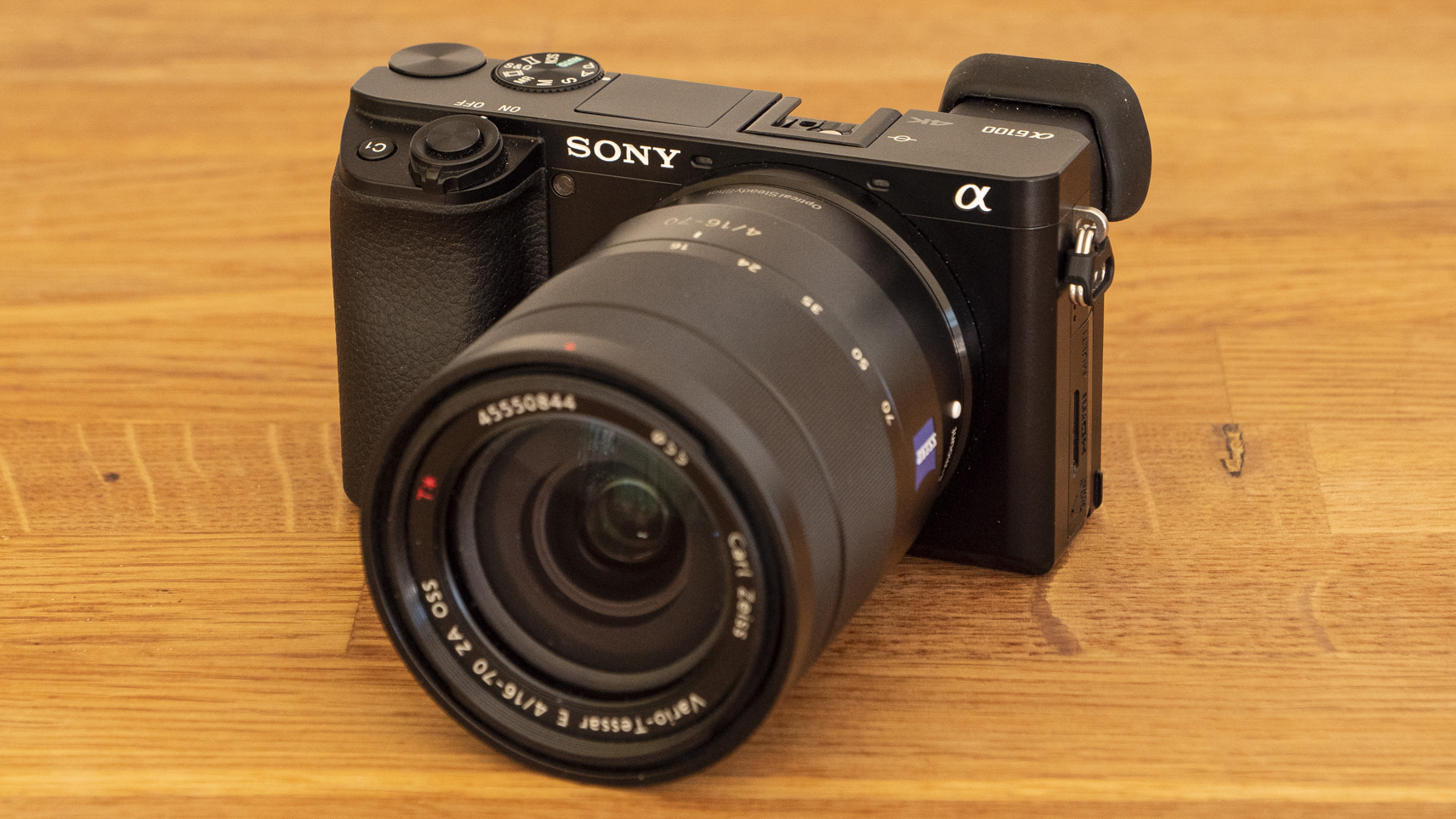
7. Sony A6100
An excellent beginner vlogging cam that capably covers most bases
Type: Mirrorless | Sensor size: APS-C CMOS | Resolution: 24.2MP | Effective focal length: N/A | Viewfinder: EVF, 1.44 million dots | Connectivity: Wi-Fi, NFC | Max movie resolution: : 4K | Size, weight: 120 x 66.9 x 59.4mm, 396g
Sony’s mirrorless Alpha range is a popular one with vloggers and the entry-level A6000 remains a stellar choice for beginners. Now, five years after its launch, there’s a successor – and the A6100 brings plenty of new tricks to the table for would-be vloggers. 4K is the headline arrival, with 30fps 100Mbps footage taken from the full sensor width, with no pixel binning. There’s Full HD, too, including slow-mo at up to 120fps. Despite its compact proportions, the a6100 trumps its more expensive a6400 sibling by offering that most sought-after of features, an external microphone port, as well as a hot-shoe on top. The display remains flip-up rather than fully articulating, but it’s now touch-sensitive – albeit with limited functionality – which makes framing and focusing easier, especially as 4K footage neatly fills the 16:9 display. An autofocus system shared with the a6600 also delivers reliably excellent continuous tracking, which is ideal for action-packed vlogs. The lack of in-body image stabilization for video is a shame (see the Sony A6600 for that), as is the absence of a neutral color profile, but the A6100 is ultimately an impressive all-rounder with features that belie its entry-level billing.
- Read our in-depth Sony A6100 review

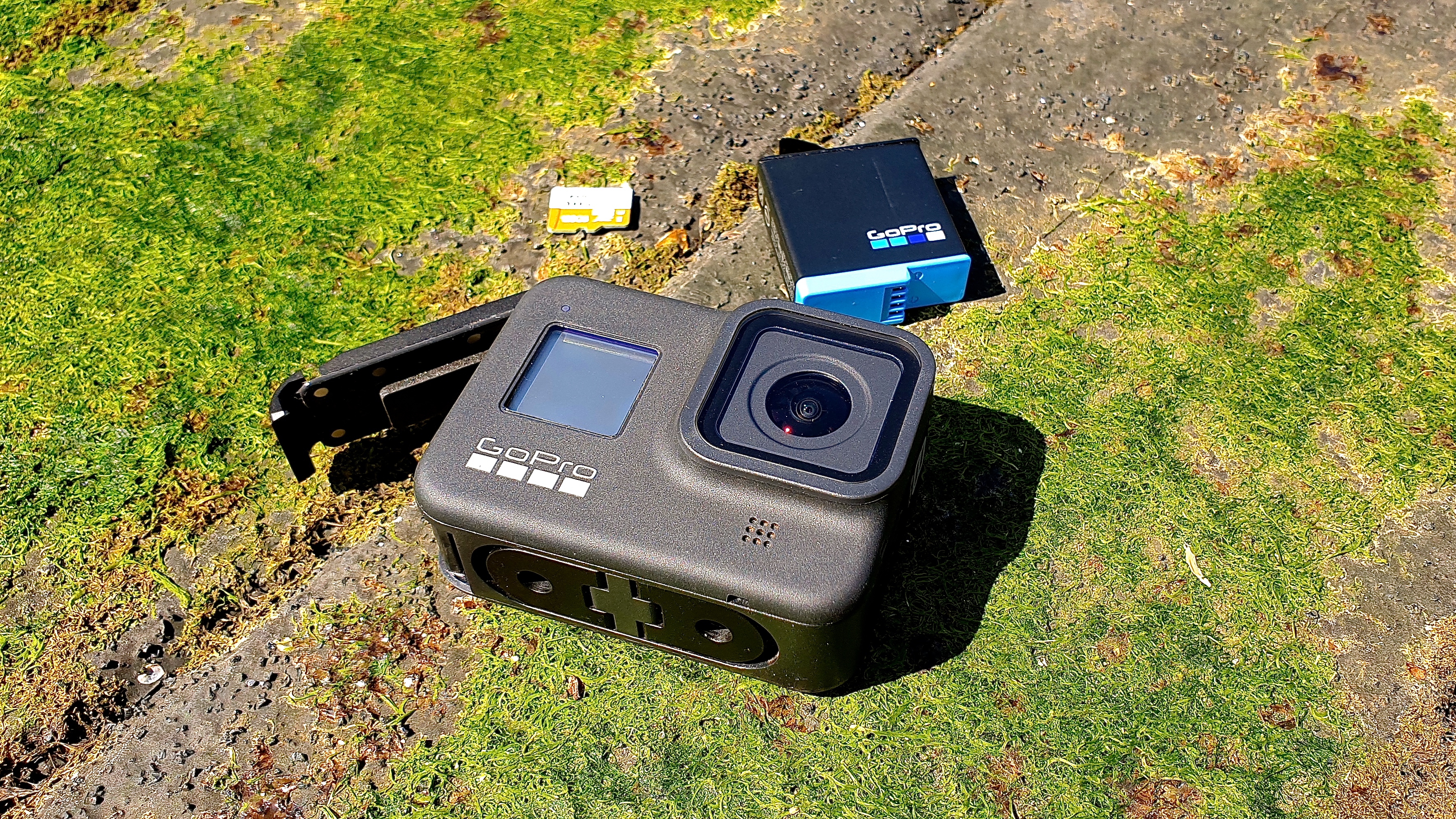
8. GoPro Hero 8 Black
The best action cam just got better
Type: Action | Sensor size: 4.5 x 6.2mm | Resolution: 12MP | Effective focal length: 16-27mm | Viewfinder: None | Monitor: 2.0-inch touchscreen | Connectivity: Wi-Fi, Bluetooth | Max movie resolution: 4K 60p | Size, weight: 66.3 x 48.6 x 28.4mm , 126g
Although on paper it feels like an incremental upgrade, but this flagship model - which has long been the shorthand for action cameras in general - has a lot to appeal to adventure lovers. There’s improved stabilization, a new microphone and a more streamlined app that makes actually recording and outputting your video a much happier and more pleasant experience.
It’s not something that will appeal to everyone as an all rounder, but if your idea of vlogging includes trekking up mountains, diving under water or biking across uneven terrain, it’s probably the one that makes the most sense.
- Read our in-depth GoPro Hero8 Black Review

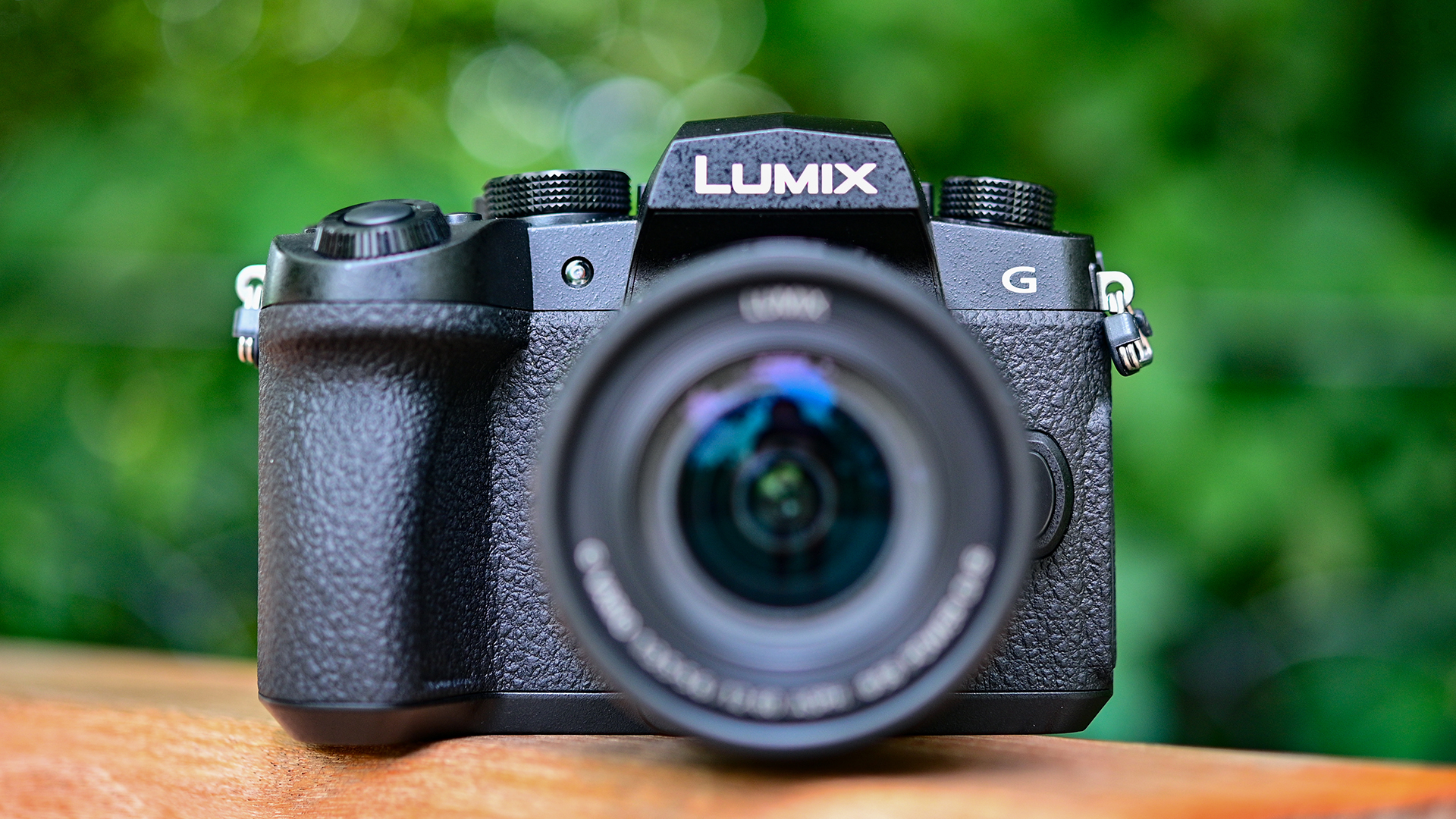
9. Panasonic Lumix G90/G95
A great mid-range travel-friendly CSC with interesting video features
Type: Mirrorless | Sensor size: Four Thirds | Resolution: 20.3MP | Effective focal length: N/A | Viewfinder: OLED Live View Finder, 2,360k dots | Monitor: 3.0-inch fully articulating touchscreen | Connectivity: Wi-Fi, Bluetooth | Max movie resolution: 4K 30p | Size, weight: 130.4 x 93.5 x 77.4mm, 533g
The recent arrival of the Panasonic G100 (which we're just in the process of testing) has pushed the G95/G90 down our vlogging camera pecking order a little, but it's a very different camera that will remain on sale and brings several advantages.
While it's much larger than the G100, this does mean it has room to pack in sensor-based stabilization, making it a great option for walkaround videos. The G95 / G90 also inherits the flagship Panasonic G9's sensor, and squeezes in an impressive array of video-friendly features, including microphone and headphone sockets for perfect sound.
There are tonnes of lenses available for the Micro Four Thirds system, so there’s something for every job, while the 14-140mm f/3.5-5.6 lens which you can buy it with as part of a kit as a great all-rounder for lots of different shooting scenarios. A fully-articulating touchscreen is ideal for presenting to camera, while there’s also advanced video features such as 4K shooting and V-Log recording, too.
- Read our in-depth Panasonic G90/G95 review

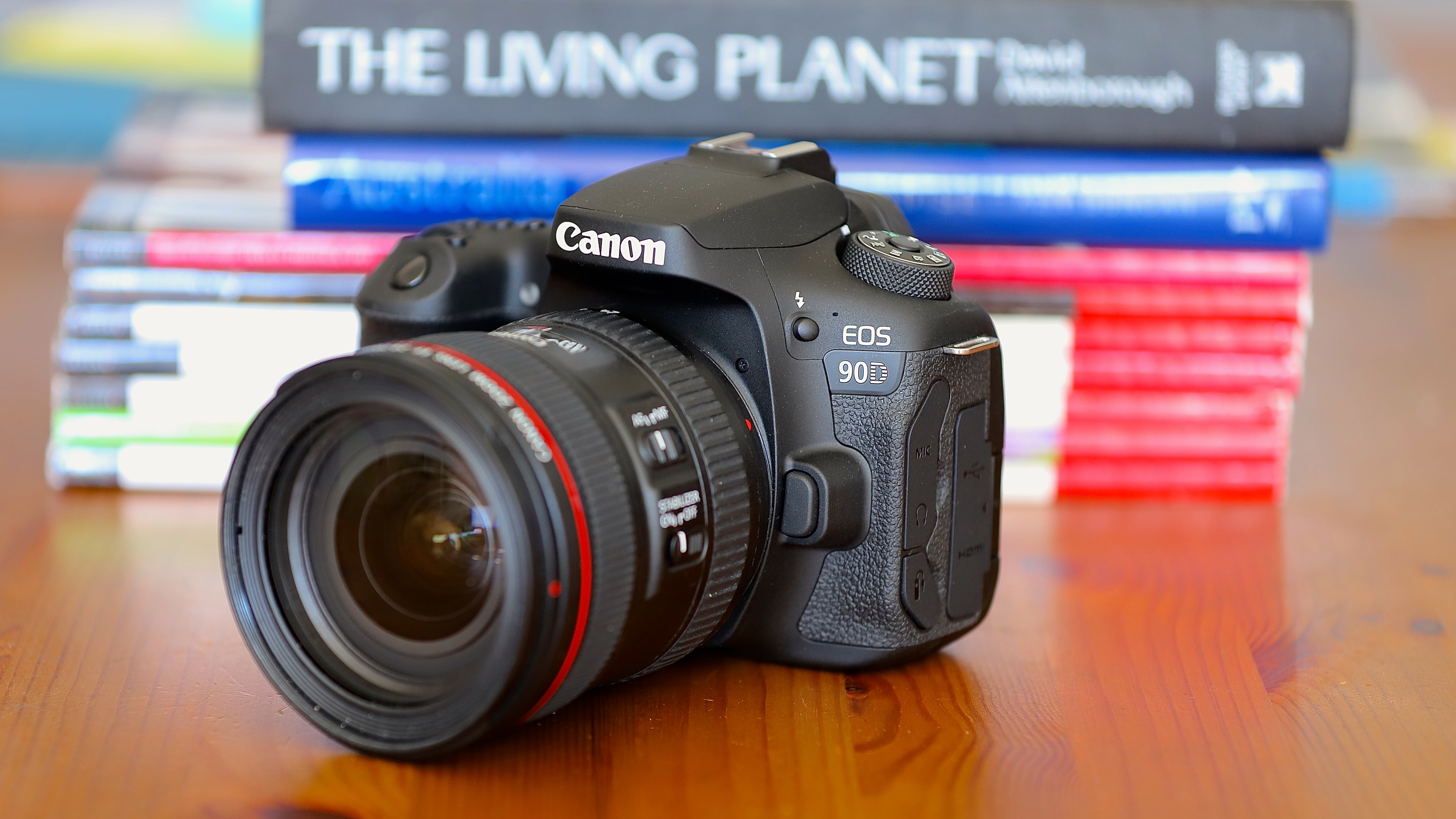
10. Canon EOS 90D
A vlogging option for lovers of tradition
Type: DSLR | Sensor size: APS-C | Resolution: 32.5MP | Effective focal length: N/A | Viewfinder: Pentamirror | Monitor: 3.2-inch vari-angle touchscreen | Connectivity: Wi-Fi, Bluetooth | Max movie resolution: 4K 30p | Size, weight: 140.7 x 104.8 x 76.8mm, 701g
DSLR releases are getting further and further apart during the reign of the mirrorless, but Canon’s release of the 90D shows that they’re not quite dead yet. Although primarily pitched as a stills camera, it has some useful vlogging-type features, including uncropped 4K video recording, mic input and an articulating touchscreen that faces forward for framing.
You’ll also be tapping into Canon’s extensive range of lenses and accessories too, so you can be as creative as you want.
- Read our in-depth Canon EOS 90D Review


11. DJI Osmo Pocket
Pocket-friendly, great value and lots of accessories - a fun option for dedicated vloggers
Type: Compact | Sensor size: 1/2.3-inch | Resolution: 12MP | Effective focal length: na | Viewfinder: na | Monitor: 1.0-inch touchscreen | Connectivity: Wi-Fi, Lightning and USB-C | Max movie resolution: 4K | Size, weight: 121.9 x 28.6 x 36.9mm, 116g
Most of the cameras in this list are essentially stills cameras with some added video functionality. The DJI Osmo Pocket is a great option for those who are only interested in the video side of things - think of it more like an alternative to go a GoPro. This dinky little camera is teeny tiny, but it still records video at 4K/30fps, with a range of optional accessories giving you the tools to be as creative as you want.
You’ll probably want to invest in a microphone for it for the best sound quality, but otherwise the quality of video, as well as useful features such as face tracking, make it a great tool for vloggers.
- Read our in-depth DJI Osmo Pocket Review

- Discover our best compact camera 2019 choices

What video quality should you be looking for?
Whatever type of camera you go for, considering video quality will likely be top of your list. At the absolute minimum you’ll be looking to shoot in Full HD (1080p), while 4K is becoming increasingly common. Although the higher resolution format will take up more space on your hard drive, it should future-proof your captures a little more than Full HD.
Other specifications to pay attention to include built-in WiFi for sharing your vlogs on the move, a fully articulating or tilting monitor for helping to frame your face, a built-in microphone socket for enhancing sound quality.
We’ve picked out eight top cameras of various shapes, sizes and attributes to suit different styles of vlogging – as well as highlighting some that will fit into your all-round stills and video shooting requirements.
from TechRadar: Photography & video capture news https://ift.tt/2HvwOQ1
via IFTTT






0 kommenttia:
Lähetä kommentti